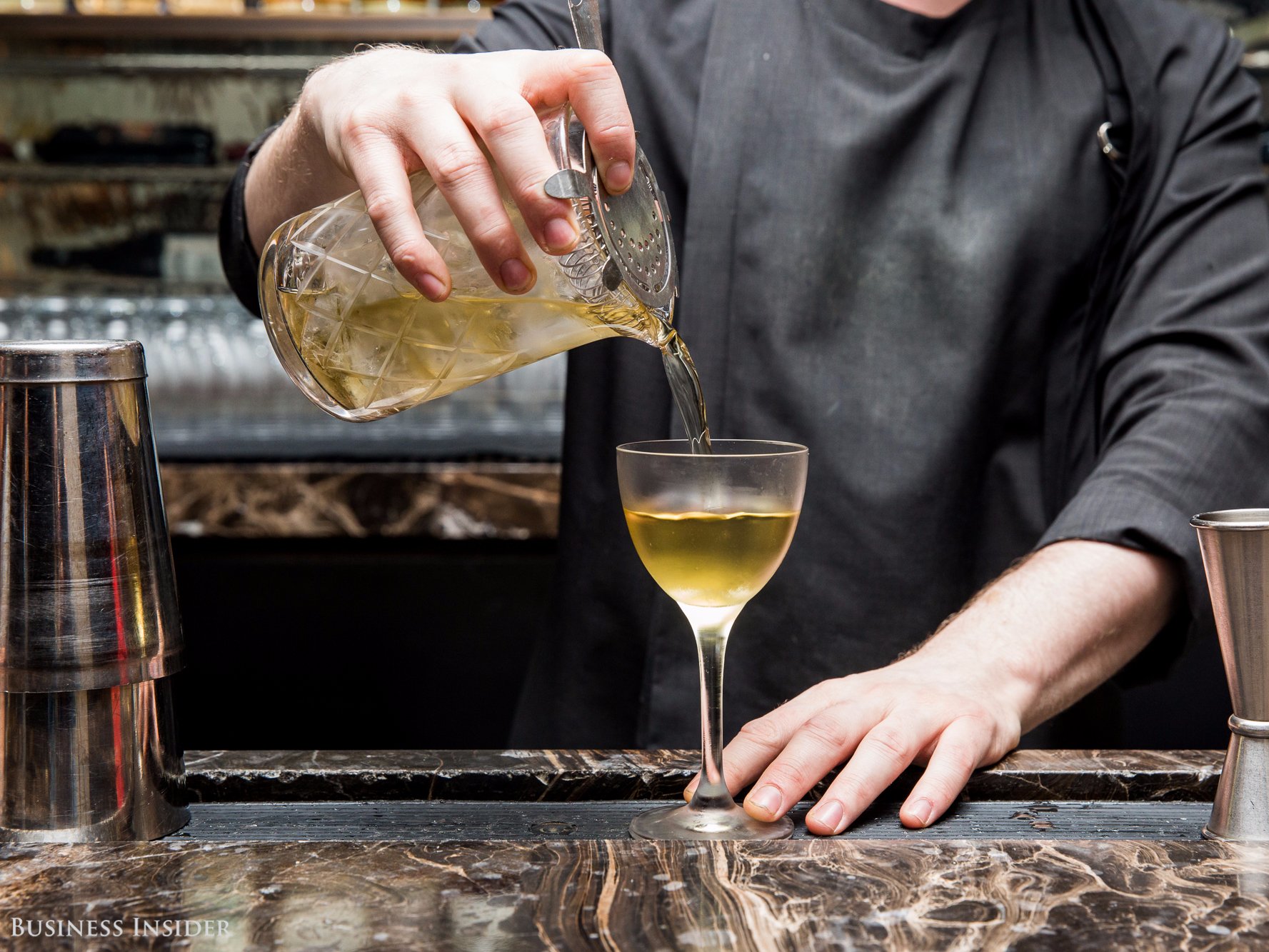 Maybe steer clear of mixed drinks from now on.Sarah Jacobs
Maybe steer clear of mixed drinks from now on.Sarah Jacobs
- Business Insider recently asked more than 30 bartenders to weigh in on what they’d love to tell customers but can’t.
- One bartender said restaurants and bars don’t keep their ice machines as clean as you think.
- You may be better off ordering your drinks “neat” from now on.
Proceed ordering your drinks with caution.
When Business Insider recently asked more than 30 bartenders to weigh in on what they’d love to tell customers but can’t, one response stood out as particularly disturbing:
“Almost no restaurants or bars clean their ice machines as regularly as they’re supposed to,” the bartender said.
What that means is, you could be drinking contaminated drinks.
Americans love ice. And even though we probably don’t think of it this way, ice is the most consumed food in a restaurant in the US.
As such, there are laws to help ensure establishments treat it that way.
According to forensic sanitarian Robert W. Powitz, cleaning and sanitizing the ice machine in a restaurant or bar on a regular basis is required by law.
In most instances, ice machines must be cleaned from two to four times a year, or “at a frequency necessary to preclude accumulation of soil or mold.” If establishments are found not to be sanitizing their ice machines frequently enough, they could face a fine of $100,000 in regular circumstances, or up to $250,000 for individuals and $500,000 for corporations if the misdemeanor results in death.
Other guidelines, including “Starting and Running a Restaurant For Dummies,” recommend establishments empty and disinfect the ice machine every month.
But, despite these guidelines, ice has a history of causing foodborne illness in the US.
Powitz reports that epidemiologists at the US Centers for Disease Control and Prevention have traced several outbreaks of gastrointestinal illness — including noroviruses — to the use of contaminated ice.
As Karen Constable, the certification manager of HACCP International, writes for Food Safety Magazine:
“Some of the illnesses are caused by bacteria and some are caused by viruses. Many outbreaks have been linked to the presence of norovirus in the ice. In some cases, the norovirus came from contaminated well water that had been used to make the ice, in other cases, from poor handling practices. Other outbreaks associated with ice consumption have been caused by Salmonella, hepatitis A, and Escherichia coli O157:H7.”
Constable explains that norovirus, which originates in human fecal matter, usually finds its way into food, including ice, due to poor handling practices — and improperly washed hands are thought to be the main cause of contamination.
“If you have ever seen a bar person drag a glass through an ice tub with his bare hands or watched an employee drop the ice scoop back into an ice machine bin with the handle coming into contact with the ice, you have seen a norovirus outbreak waiting to happen,” she writes.
In 2002, a healthy 15-year-old boy died after contracting norovirus from ice contaminated by a sick employee who had not washed his hands.
“Most people don’t realize that not washing their hands could cause death,” Debra Huffman, a microbiologist with the University of South Florida, told NBC News. “They just don’t see the risk. It’s not going to smell funny. It’s not going to look funny. These are microscopic, and so you’re not going to see it. You wouldn’t known it happened.”
In 2008, Pennsylvania investigators blamed an ill bartender and a contaminated ice machine for sickening two newlyweds and about 70 wedding guests at a reception.
A 2011 study focused on ice dispensers conducted in Las Vegas food establishments found that approximately one-third of commercial ice machines were breeding grounds for dangerous bacteria, while 72.2% contained indicators that coliform bacteria could be present.
And an investigation conducted by the Daily Mail, where the publication collected ice from ten fast-food franchises in the UK including McDonald’s, Burger King, KFC, and Starbucks, showed that six out of ten branches were serving up ice dirtier than samples of water taken from these branches’ toilet bowls.
So the next time you order a drink at a bar, you may be better off ordering it “neat.”













